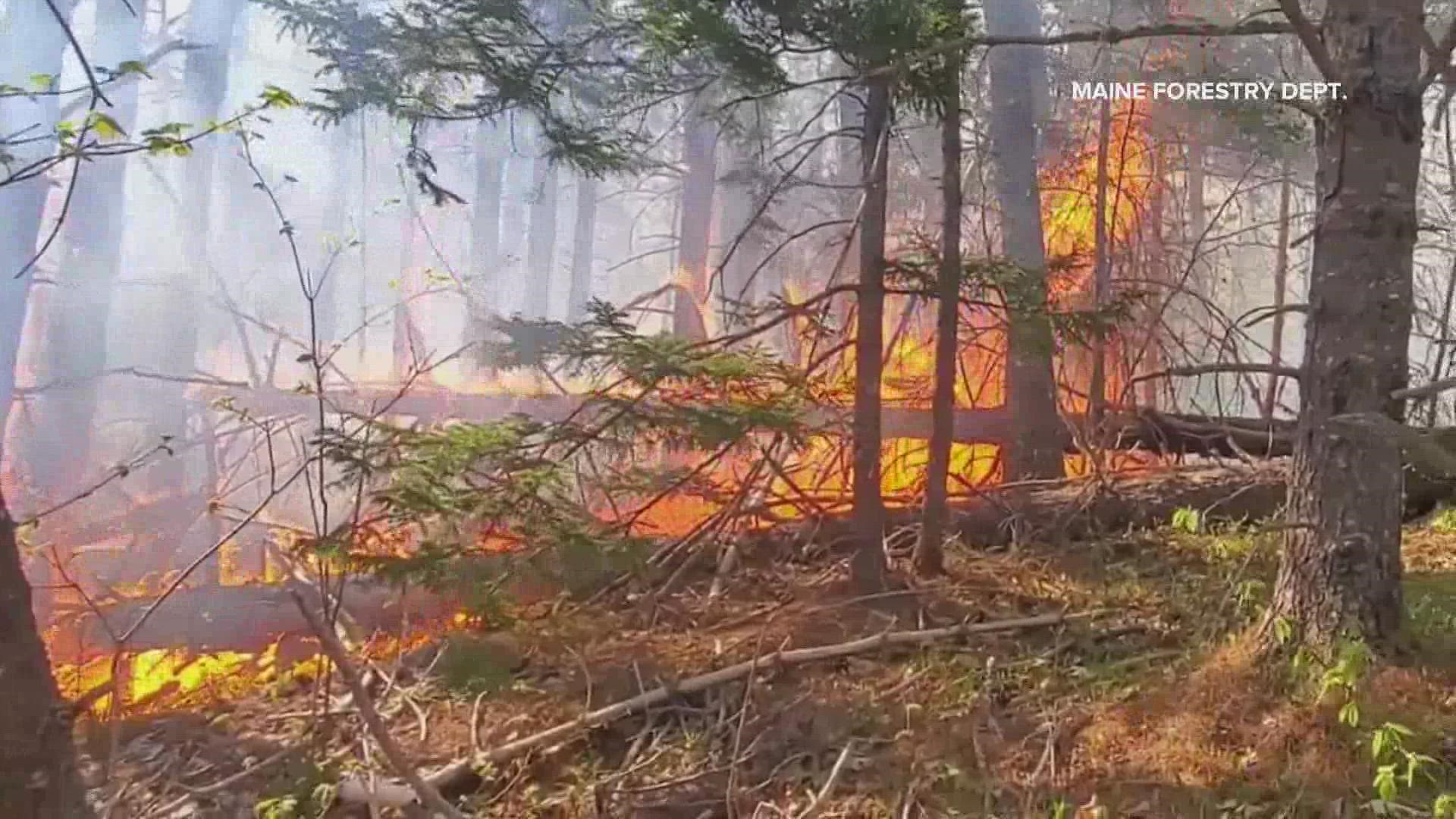AUGUSTA, Maine — Springtime is wildfire season in Maine, and this spring is no exception.
After the snow melts but before buds bloom, dead leaves, and debris make for perfect kindling. Kent Nelson is a forest ranger of 21 years. As of June 2, his office recorded 388 wildfires so far in 2022, on pace to eclipse the previous year’s total of 651. And that number came on the heels of a 33 percent increase in fires during the five years before that.
About 89 percent of Maine is forested, more than any other state. That’s a lot of potential fuel for wildfires. That said, the state doesn't experience catastrophic, widespread fires like those out West. Seasoned foresters have, however, noticed changes in the number of Maine wildfires, as well as the conditions that cause them to spread.
A couple of big things worry Nelson and the forest service. The first is relative humidity, or RH, which is a measure of the moisture in the air relative to temperature. Nelson received troubling data related to RH during a recent meeting with the National Weather Service.
"We had a five-day span when the RH was less than 20 percent, which means pretty active fire behavior," he said. "[The NWS meteorologist] looked in the records, and he had to go all the way back to 1948 to find that many days in a row with that low RH."
Patty Cormier, who directs the state forest service, said that humidity reading troubled her also.
"Here’s a new little signal to watch out for," Cormier, who still volunteers for the Farmington Fire Department, said.
Low relative humidity creates dry conditions to more easily ignite fires. Along with that, Cormier is concerned by "extreme events" in the weather.
As our climate changes, federal agencies like the National Oceanic and Atmospheric Administration and the Environmental Protection Agency believe storms are becoming more frequent and more volatile. Droughts persist and then, in some counties, Cormier measured a week’s worth of rain falling in a day last summer. But that much rain all at once doesn’t help.
"It’s coming down hard. It’s not a nice, easy rain," she said. "It’s not absorbing, because it’s just pounding and running off. Therefore, the trees are not getting that moisture. You think they are, but they’re not."
The good news is, unlike in western states, wildfires in Maine are almost entirely preventable. According to the forest service, 92 percent of all wildfires in Maine are caused by humans. The other 8 percent are typically lightning strikes.
Nelson added the technology and training used to fight wildfires have improved greatly over his career. Rangers and fire departments can contain them quicker and investigators track them back to their origin.
Even if a fire decimates dozens of acres, Nelson explained, he can walk through the scene armed with little more than weather data and a magnifying glass. He looks for small clues, like which direction pine needles had been blown by the wind at the moment flames singed them to a crisp. Then, once he's triangulated the point of origin, he need only to find a match or a melted lighter to confirm the source.
While he and Cormier study the evolution of how wildfires spread, they’re as confident as ever their rangers will find those responsible for starting them.
The Maine Forest Service updates a fire danger map on its website each morning, broken down by region, with color-coordinated danger levels fire danger map.

